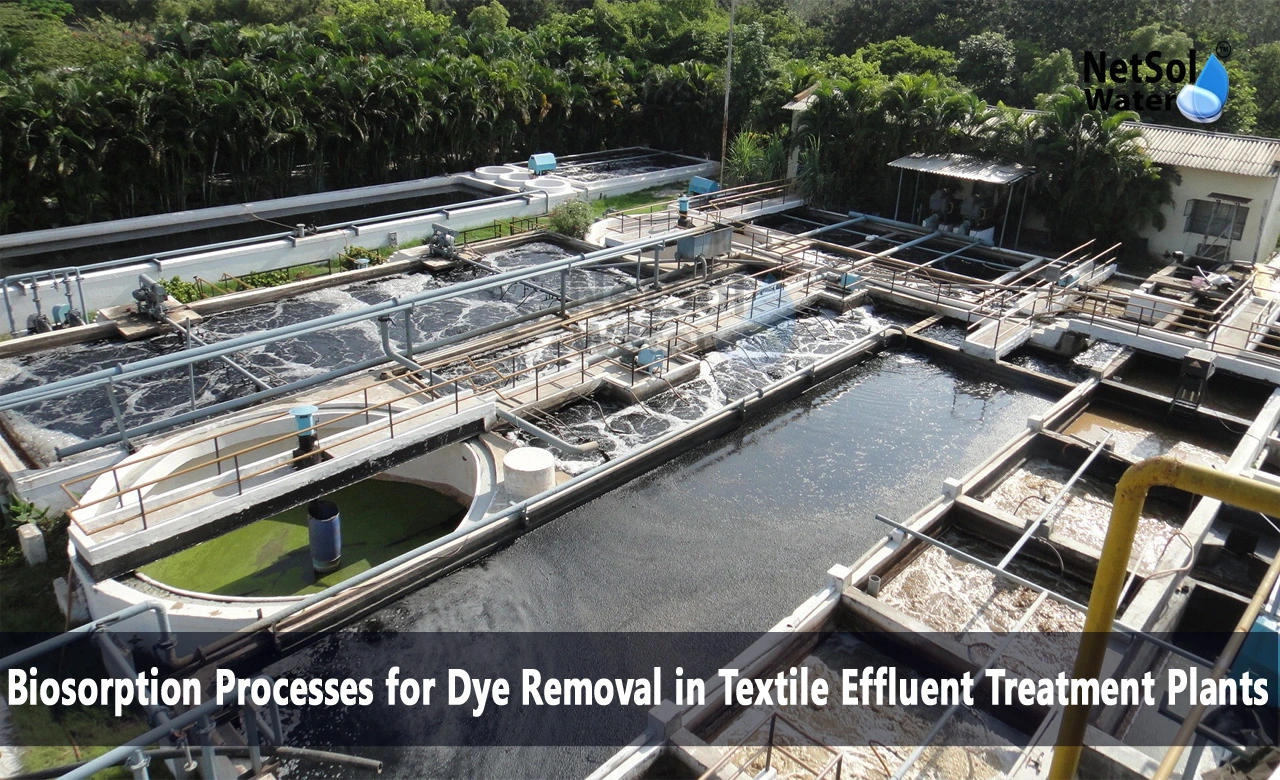Biosorption Processes for Dye Removal in Textile ETP Plants
The textile industry uses a lot of water and produces a ton of wastewater. When they dye fabrics, some of the dye ends up in the wastewater, which is really bad for the environment. These dyes can be super harmful to animals and people because they're toxic and stick around for a long time.
Getting rid of these dyes from the wastewater usually costs a lot of money and can make more pollution. But now, there's a better way: using biosorption. It's an innovative process that's good for the environment and doesn't cost as much. It helps take out the dyes from the wastewater in textile factories, making things cleaner and safer for everyone.
What is Biosorption?
Biosorption is a method that uses special natural materials, called biosorbents, to clean up pollutants from wastewater by sticking to them. These biosorbents can come from things like leftover bits from farming, stuff left over from making things, or even tiny living things like bacteria.
Unlike regular materials used for cleaning, biosorbents are good for the environment because they can be made again and again, they break down naturally, and they don't cost much. That's why they're a smart choice for getting rid of dyes in the water from textile factories. They help keep the water clean and safe without hurting the planet.
Types of Biosorbents
Various types of biosorbents have been explored for dye removal in textile effluent plants, including:
1. Agricultural Waste: Biosorbents derived from agricultural waste, such as rice husk, wheat straw, and sawdust, have shown promising results in dye adsorption due to their high cellulose and lignin content.
2. Industrial By-Products: Biosorbents obtained from industrial by-products, like fly ash, bagasse, and spent brewery grains, offer a sustainable way to utilize waste materials for dye removal.
3. Microbial Biomass: Certain microorganisms, such as fungi, bacteria, and algae, have demonstrated excellent biosorption capabilities for dye removal due to their unique cell wall structures and functional groups.
4. Natural Polymers: Biopolymers like chitosan, derived from crustacean shells, and alginate, extracted from brown algae, have been extensively studied for their potential in dye adsorption.
Mechanisms of Biosorption
In the biosorption process for removing dyes, several mechanisms come into play. Firstly, there's ion exchange, where dyes with charged ions are drawn to the oppositely charged functional groups on the biosorbent's surface, resulting in an exchange of ions.
Secondly, there's complexation, where certain biosorbents have special functional groups that can form complexes with dye molecules, effectively pulling them out of the wastewater.
Thirdly, physical adsorption occurs, whereby dye molecules adhere to the porous surface of biosorbents through forces like van der Waals interactions, hydrogen bonding, and hydrophobic interactions.
Lastly, electrostatic attraction takes place due to the presence of charged functional groups on the biosorbent's surface, causing charged dye molecules to be attracted to it. These mechanisms work together to efficiently remove dyes from the wastewater in textile effluent plants.
Factors Affecting Biosorption
The efficiency of biosorption processes for dye removal in textile effluent plants can be influenced by various factors, including:
1. pH: The pH of the effluent can affect the surface charge of the biosorbent and the ionization state of the dye molecules, impacting the adsorption process.
2. Temperature: Higher temperatures can enhance the adsorption rate and capacity due to increased molecular mobility and diffusion rates.
3. Biosorbent Dosage: The amount of biosorbent used plays a crucial role in determining the adsorption efficiency, as it influences the available surface area for dye adsorption.
4. Initial Dye Concentration: The initial concentration of dyes in the effluent can impact the adsorption equilibrium and the overall removal efficiency.
5. Contact Time: Sufficient contact time between the biosorbent and the effluent is necessary to achieve optimal adsorption and equilibrium.
Advantages of Biosorption
Biosorption processes for dye removal in textile effluent plants offer several advantages over traditional treatment methods:
1. Low Cost: Biosorbents are often derived from waste materials or readily available natural sources, making them cost-effective compared to synthetic adsorbents.
2. Eco-Friendly: Biosorption is a environmentally friendly process that utilizes renewable and biodegradable materials, reducing the generation of secondary pollutants.
3. High Efficiency: Certain biosorbents have demonstrated remarkable adsorption capacities and removal efficiencies for a wide range of dyes, making them highly effective for textile effluent treatment.
4. Regeneration and Reuse: Many biosorbents can be regenerated and reused multiple times, further reducing the overall treatment costs and promoting sustainability.
5. Minimal Sludge Generation: Biosorption processes typically generate less sludge compared to chemical treatment methods, reducing the need for additional sludge handling and disposal.
Challenges and Future Perspectives
Despite the benefits offered by biosorption processes, there are still some hurdles to overcome:
Scaling up from lab to industrial levels can be tough and needs more study and improvement.
Biosorbents may need tweaking to boost how much they can absorb and how selective they are. This might involve using chemicals or changing their structure.
Textile wastewater can vary a lot in what's in it, so biosorbents have to be able to handle all kinds of dyes. This means they need to be versatile and strong.
Once biosorbents have soaked up dyes, we need good ways to clean them up and either throw them away or use them again. This is important for keeping the process sustainable.
Integrating biosorption into existing wastewater treatment systems at textile plants needs careful planning. We have to make sure everything works together smoothly and efficiently.
Conclusion
Biosorption processes offer a promising and sustainable solution for dye removal in textile effluent plants. By utilizing biosorbents derived from agricultural waste, industrial by-products, and microbial biomass, these processes can effectively remove dyes from wastewater while minimizing environmental impact and reducing treatment costs.
The effectiveness of biosorption processes is influenced by various factors, such as pH, temperature, biosorbent dosage, initial dye concentration, and contact time. While biosorption offers several advantages, including low cost, eco-friendliness, high efficiency, regeneration potential, and minimal sludge generation, challenges related to scale-up, biosorbent modification, effluent variability, regeneration, and integration with existing treatment systems need to be addressed.
Continued research and development in biosorption processes, including the exploration of new biosorbent materials, modification techniques, and process optimization, will be crucial for their widespread adoption and successful implementation in textile effluent plants. By embracing biosorption technologies, the textile industry can take a significant step towards sustainable water management and environmental stewardship.
Netsol Water is Greater Noida-based leading water & wastewater treatment plant manufacturer. We are industry's most demanding company based on client review and work quality. We are known as best commercial RO plant manufacturers, industrial RO plant manufacturer, sewage treatment plant manufacturer, Water Softener Plant Manufacturers and effluent treatment plant manufacturers. Apart from this 24x7 customer support is our USP. Call on +91-9650608473, or write us at enquiry@netsolwater.com for any support, inquiry or product-purchase related query.



